Table of Contents
Overview – Parasitic Skin Infestations
Parasitic skin infestations such as scabies and lice (pediculosis) are highly contagious ectoparasitic conditions, commonly seen in children and crowded living environments. These infestations are caused by arthropods that live on or in the skin, leading to intense itching, rash, and secondary infection. Prompt diagnosis and effective treatment are crucial—not only to relieve symptoms, but also to prevent outbreaks in schools, households, and communities.
Definition
Parasitic skin infestations refer to the colonisation of the skin or hair by ectoparasites such as:
- Scabies mites (Sarcoptes scabiei) – burrow into the stratum corneum
- Lice (Pediculus and Phthirus species) – attach to hair shafts and feed on blood
Aetiology
Scabies
- Caused by Sarcoptes scabiei
- Human-to-human transmission
- Zoonotic strains (from animals) are mild and self-limiting
- Human strains persist unless treated
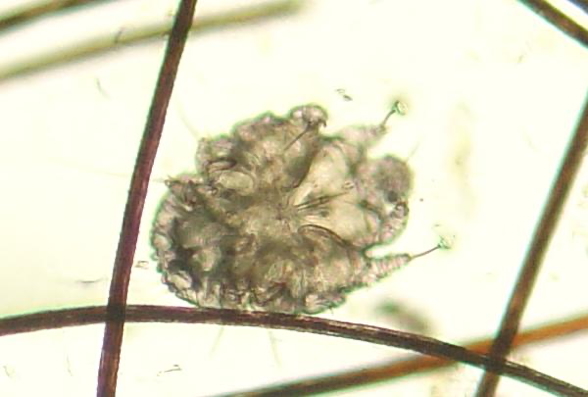
Lice (Pediculosis)
Three species:
- Head Lice (Pediculus humanus capitis) – most common in school-aged children
- Body Lice (Pediculus humanus corporis) – live on clothing, feed on skin
- Pubic Lice (Phthirus pubis) – sexually transmitted; can infest any coarse body hair
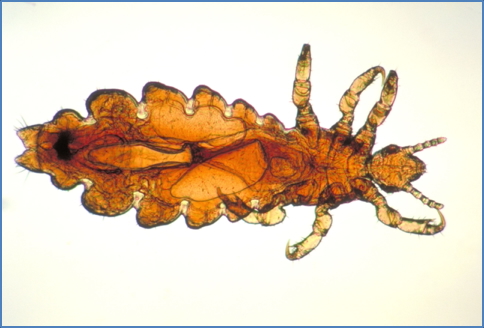
Pathophysiology
Scabies
- Mites burrow into the stratum corneum
- Salivary enzymes digest keratinocytes → hypersensitivity and inflammation
- Fertilised females deposit eggs in skin tunnels
- Mites and their excreta evoke an intense immune response
Lice
- Eggs (nits) laid in hair shafts
- Hatch into larvae and mature into blood-sucking adults
- Transmission via close contact or shared personal items
Clinical Features
Scabies
- Intense nocturnal pruritus
- Excoriated rash on trunk, wrists, and interdigital spaces
- Burrows visible on hands and feet
- Vesicles/pustules on palms, soles, and sometimes scalp
- In infants: may be more widespread
- Secondary impetiginisation is common
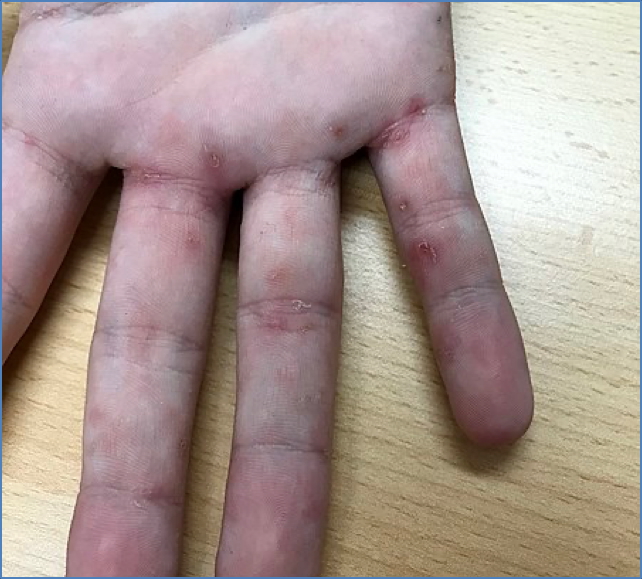
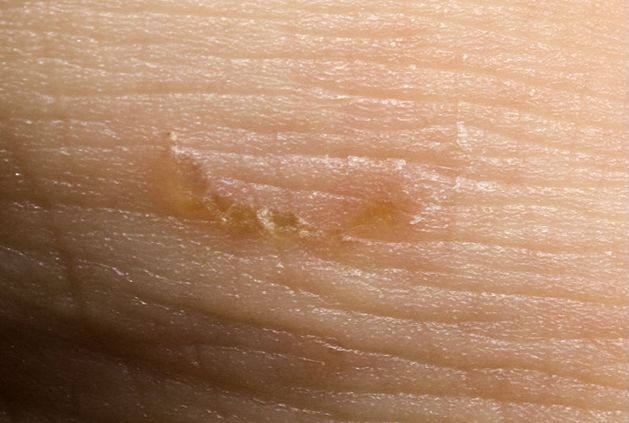
2. Penarc, CC BY 3.0 <https://creativecommons.org/licenses/by/3.0>, via Wikimedia Commons
Lice
- Itchy scalp and visible nits in hair
- Neck irritation or papules
- Pubic lice can cause irritation on genital area, axillae, beard, etc.
- Body lice may lead to widespread pruritic rash
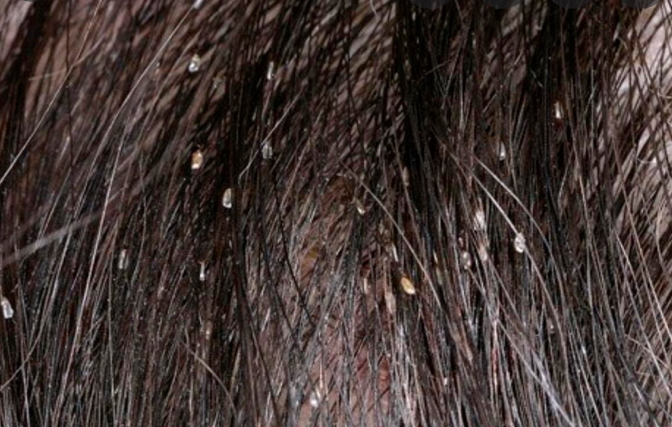
Diagnosis
Scabies
- Clinical diagnosis: symmetrical itchy rash, burrows, family or community history
- Confirmatory test: skin scraping for mites, eggs, faeces
- Useful in crusted scabies or treatment failure
Lice
- Conditioner & Comb technique:
- Conditioner immobilises lice
- Fine-tooth comb reveals live lice and nits
- Highly sensitive, practical, and inexpensive
Management
Scabies
- Topical permethrin cream (first-line)
- Oral ivermectin (if severe or crusted scabies; expensive, not PBS-covered)
- Repeat treatment after 7 days
- Environmental control:
- Wash bedding and clothes in hot water
- Sun exposure for items
- Vacuum furniture
- Community management:
- Treat close contacts simultaneously
- Especially important in Indigenous or remote communities
Lice
- Physical removal: conditioner + nit comb
- Topical insecticides (e.g. permethrin lotion)
- Treat all body hair in pubic lice
- Wash bedding, hats, and pillows
- Causes of treatment failure:
- Inadequate application
- Resistance
- Failure to retreat in 7–10 days
- Reinfection
Complications
- Secondary bacterial infection (especially in scabies)
- Crusted scabies – highly contagious and difficult to treat
- Psychosocial impact, especially in children
- Post-inflammatory hyperpigmentation or scarring
Differential Diagnosis
- Eczema
- Psoriasis
- Folliculitis
- Contact dermatitis
- Tinea infections
- Seborrhoeic dermatitis (in scalp)
Summary – Parasitic Skin Infestations
Parasitic skin infestations such as scabies and lice are common, contagious conditions caused by mites and insects that live on or in human skin or hair. Scabies presents with intense itching and burrows, while lice cause scalp irritation and visible nits. Both require appropriate antimicrobial treatment and environmental control to prevent reinfestation. For more information on related conditions, visit our Skin & Dermatology Overview page.